Architecture for Community-Based Ageing—A Shape Grammar for Transforming Typical Single-Family Houses into Older People’s Cohousing in Slovenia
Abstract
:1. Introduction
1.1. Motivation and Background of the Study
1.2. The Current State of Older People’s Housing Conditions in Slovenia
1.3. Manuscript Content and Outline
2. Methods and Materials
2.1. Observatory Framework—Defining the Typical Post-War Single-Family House
2.2. Transformation Shape Grammars
2.3. Research Design
2.4. Research Approach—Analysing the Corpus of Designs
2.5. Inferring the Shape Rules
3. Results
3.1. Shape Rules
3.1.1. Transformation Rules
- Rules for re-using space functions 1–12 (Figure 10);
- Rules for swapping space functions 44–55 (Figure 12);
- Rules for transforming full bathrooms into en-suite bathrooms 85–86 (Figure 14);
- Rules for extension, subtraction, and insertion 87–97 (Figure 14);
- Rules for determining entrances 98–99 (Figure 14);
- Rules for lift positioning 100–112 (Figure 15);
- Rules for addition and removal 113–114 (Figure 15); and
3.1.2. Space Requirements
3.1.3. Sets of Rules
3.2. Strategies
3.2.1. Detecting and Describing the Strategies
3.2.2. Transformation Sequences
3.3. Demonstration
4. Discussion
5. Conclusions
Author Contributions
Funding
Institutional Review Board Statement
Informed Consent Statement
Data Availability Statement
Acknowledgments
Conflicts of Interest
References
- Ageing Europe. Available online: https://ec.europa.eu/eurostat/cache/digpub/ageing/ (accessed on 17 November 2022).
- The Community of Social Institutions in Slovenia—SSZS. An Overview of Retirement Home Capacities and the Number of Applicants. Available online: https://servis.ssz-slo.si/ (accessed on 17 November 2022).
- Mali, J. Od Hiralnic do Domov za Stare Ljudi; Fakulteta za Socialno Delo UL: Ljubljana, Slovenia, 2008. [Google Scholar]
- Mali, J. Dolgotrajna Oskrba v Mestni Občini Ljubljana; Fakulteta za Socialno Delo UL: Ljubljana, Slovenia, 2013. [Google Scholar]
- Kavsek, M.; Bogataj, D. Ageing in Place Driving Urban Transformations. J. Univers. Excell. 2016, 5, 1–12. [Google Scholar]
- WHO. Age-Friendly Environments in Europe, a Handbook of Domains for Policy Action; WHO Regional Office for Europe: Copenhagen, Denmark, 2017; Available online: https://apps.who.int/iris/bitstream/handle/10665/334251/9789289052887-eng.pdf (accessed on 15 January 2023).
- Architects’ Council of Europe. Statement for Affordable & Quality Housing, Presented at the Affordable Housing Activation Forum Held in Madrid on 18–20 May 2022. Available online: https://www.ace-cae.eu/fileadmin/user_upload/ACE_HOUSING_STATEMENT_18_MAY_FINALOK.pdf (accessed on 15 January 2023).
- Boljka, U.; Ogrin, A. Da je Skupaj Lažje Biti Sam: Zbornik Prispevkov o (so)bivanju Starejših; Zveza Društev Upokojencev Slovenije: Ljubljana, Slovenia, 2013; Available online: http://www.firis-imperl.si/wp-content/uploads/2014/07/ZDUS_HELPS-sobivanje-intervju.pdf (accessed on 27 March 2019).
- NPSta. National Housing Program, Official Gazette of the Republic of Slovenia, No. 43/00, Uradni List Republike Slovenije d.o.o., Ljubljana. Available online: http://pisrs.si/Pis.web/pregledPredpisa?id=NACP25 (accessed on 12 October 2019).
- ReNSP15—Resolution on the National Housing Program 2015—In Official Gazette of the Republic of Slovenia; No. 92/15, Uradni list Republike Slovenije d.o.o., Ljubljana. Available online: http://www.pisrs.si/Pis.web/pregledPredpisa?id=RESO114 (accessed on 17 November 2022).
- UMAR. Strategija Dolgožive Družbe. Available online: www.umar.gov.si/fileadmin/user_upload/publikacije/kratke_analize/Strategija_dolgozive_druzbe/Osnutek_SDD_april_2017_prava_verzija.pdf (accessed on 14 October 2019).
- Mali, J. Koncept Totalne Ustanove in Domovi za Stare. Socialno delo, Letnik 45, Številka ½, Str. 17-URN:NBN:SI:DOC-SNFZ9ITE. Available online: http://www.dlib.si (accessed on 18 March 2022).
- Majcen, B.; Uršič, S.; Srakar, A.; Mašič, S. SHARE (Eng. The Survey of Health, Ageing and Retirement in Europe): Kako Slovenci Živimo v Drugi Polovici Življenja; Inštitut za Ekonomska Raziskovanja: Ljubljana, Slovenia; Available online: http://www.share-slovenija.si/ (accessed on 5 January 2020).
- Housing Europe Observatory. Ageing Well at Home, a Research Briefing by the Housing Europe Observatory, Vol. 5 of the Series. Available online: https://www.housingeurope.eu/resource-1560/ageing-well-at-home (accessed on 15 January 2023).
- SURS—Statistical Office of the Republic of Slovenia. Available online: https://www.stat.si/StatWeb/news/Index/8160 (accessed on 17 January 2023).
- Brezar, V. Stanovanjska Gradnja v Sloveniji Včeraj in Danes; Urbani Izziv, 28/29, Urban Challenge Journal, Ljubljana; 1995; pp. 98–108. Available online: https://www.dlib.si/details/URN:NBN:SI:doc-DZVVGY48 (accessed on 11 December 2020).
- Mihailović, Ž. Katalog Tipskih Projekata sa Preko 1300 Tipova: Vikend Kuće, Prizemne Zgrade, Spratne Zgrade, Zgrade sa Lokalom, Garaže, Ekonomske Zgrade; Naš Stan: Beograd, Serbia, 1979. [Google Scholar]
- Stare Slike Cerknica. Online Archive with Primary Sources Including Photographs and Written Accounts. Figure 3 Source Images Provided by Perko, Franc (Left and Centre-Left) and Used with their Permission. Available online: https://stareslike.cerknica.org/2018/12/07/1970-slivice-betoniranje-temeljev-za-hiso/ (accessed on 10 October 2022).
- Stare Slike Cerknica. Online Archive with Primary Sources Including Photographs and Written Accounts. Figure 3 Source Images Provided by Janeš, Alojz. Available online: https://stareslike.cerknica.org/2020/03/07/1973-loz-gradnja-smelijevega-naselja/ (accessed on 10 October 2022).
- Blenkuš, M. Uporabniku in Okolju Prilagojeno Načrtovanje Stanovanjske Gradnje. Ph.D. Thesis, University of Ljubljana, Ljubljana, Slovenia, 2003. [Google Scholar]
- Duarte, J. Towards the Mass Customization of Housing: The Grammar of Siza’s Houses at Malagueira. Environ. Plan. B Plan. Des. 2005, 32, 347–380. [Google Scholar] [CrossRef]
- Kolarevic, B.; Duarte, J.P. Mass Customization and Design Democratization; Routledge, Taylor & Francis LTD: Abingdon, UK, 2018. [Google Scholar]
- Steadman, P. Research in architecture and urban studies at Cambridge in the 1960s and 1970s: What really happened. J. Arch. 2016, 21, 291–306. [Google Scholar] [CrossRef]
- Hawkes, D. Bridging the cultures: Architecture, models and computers in 1960s Cambridge. Interdiscip. Sci. Rev. 2017, 42, 144–157. [Google Scholar] [CrossRef]
- Alexander, C. Notes on the Synthesis of Form; Harvard University Press: Cambridge, UK, 1964. [Google Scholar]
- Stiny, G.; Gips, J. Shape Grammars and the Generative Specification of Painting and Sculpture. IFIP Congr. 1971, 71, 1460–1465. [Google Scholar]
- Hillier, B.; Leaman, A.; Stansall, P.; Bedford, M. Space syntax. Environ. Plan. B Plan. Des. 1976, 3, 147–185. [Google Scholar] [CrossRef]
- Stiny, G.; Mitchell, W.J. The Palladian Grammar. Environ. Plan. B Plan. Des. 1978, 5, 5–18. [Google Scholar] [CrossRef]
- Koning, H.; Eizenberg, J. The Language of the Prairie: Frank Lloyd Wright’s Prairie Houses. Environ. Plan. B Plan. Des. 1981, 8, 295–323. [Google Scholar] [CrossRef]
- Flemming, U. More than the sum of parts: The grammar of Queen Anne houses. Environ. Plan. B Plan. Des. 1987, 14, 323–350. [Google Scholar] [CrossRef]
- Knight, T.; Stiny, G. Making grammars: From computing with shapes to computing with things. Des. Stud. 2015, 41, 8–28. [Google Scholar] [CrossRef]
- Stiny, G. Two exercises in formal composition. Environ. Plan. B Plan. Des. 1976, 3, 187–210. [Google Scholar] [CrossRef]
- Eloy, S.; Duarte, J.P. Inferring a shape grammar: Translating designer’s knowledge. Artif. Intell. Eng. Des. Anal. Manuf. 2014, 28, 153–168. [Google Scholar] [CrossRef] [Green Version]
- Smyth, M.; Edmonds, E. Supporting design through the strategic use of shape grammars. Knowl.-Based Syst. 2000, 13, 385–393. [Google Scholar] [CrossRef]
- Eloy, S.; Duarte, J.P. A Transformation Grammar for Housing Rehabilitation. Nexus Netw. J. 2011, 13, 49–71. [Google Scholar] [CrossRef]
- Coimbra, E.; Romão, L. The Rehabilitation Design Process of the Bourgeois House of Oporto: Shape Grammar Simplification, Computation and Performance. In Proceedings of the 31st eCAADe Conference, Delft, The Netherlands, 18–20 September 2013; Faculty of Architecture, Delft University of Technology: Delft, The Netherlands, 2013; Volume 2, pp. 677–685. [Google Scholar]
- Eloy, S. A Transformation Grammar-Based Methodology for Housing Rehabilitation: Meeting Contemporary Functional and ICT Requirements. Ph.D. Thesis, Instituto Superior Técnico, Universidade Técnica de Lisboa, Lisbon, Portugal, 2012. [Google Scholar]
- Guerritore, C.; Duarte, J. Manifold Façades—A Grammar-Based Approach for the Adaptation of Office Buildings into Housing. In Proceedings of the 34th International Conference on Education and Research in Computer Aided Architectural Design in Europe, eCAADe, Oulu, Finland, 24–26 August 2016; eCAADe 34-DESIGN TOOLS–Applications. University of Oulu: Oulu, Finland, 2016; Volume 2, pp. 189–198. Available online: http://papers.cumincad.org/data/works/att/ecaade2016_099.pdf (accessed on 18 December 2022). [CrossRef]
- Colakoglu, B. Design by Grammar: An Interpretation and Generation of Vernacular Hayat Houses in Contemporary Context. Environ. Plan. B Plan. Des. 2005, 32, 141–149. [Google Scholar] [CrossRef]






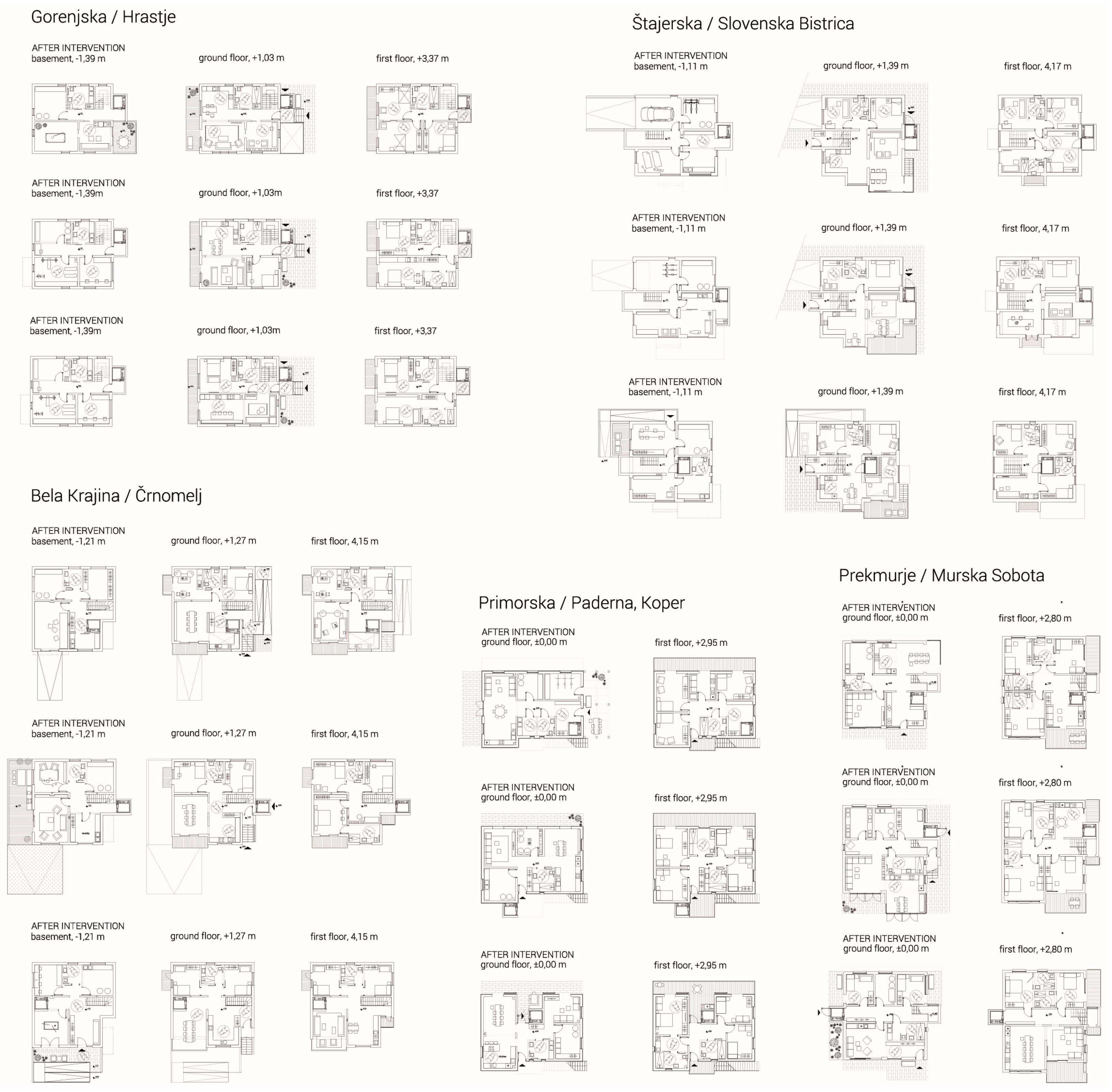
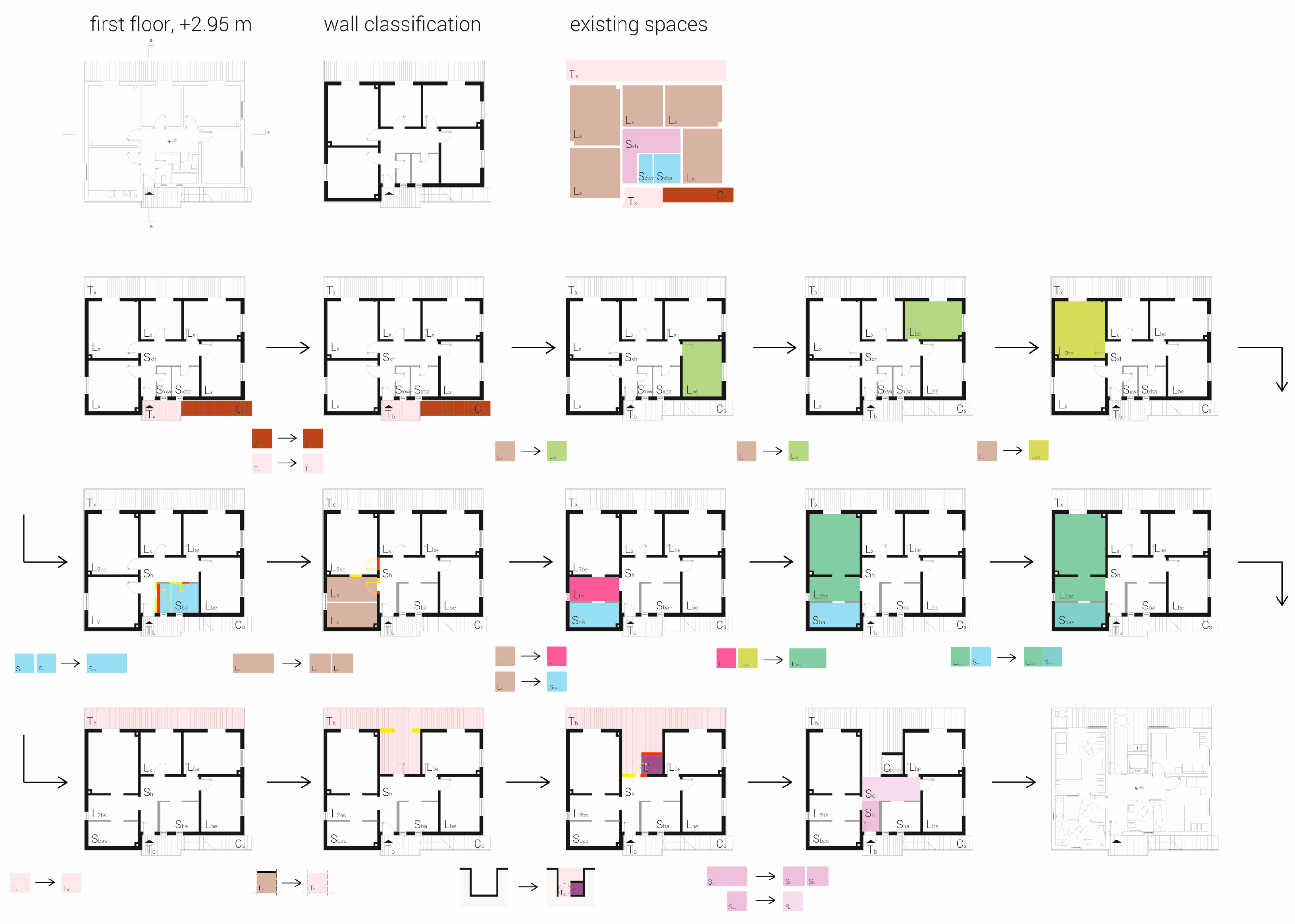

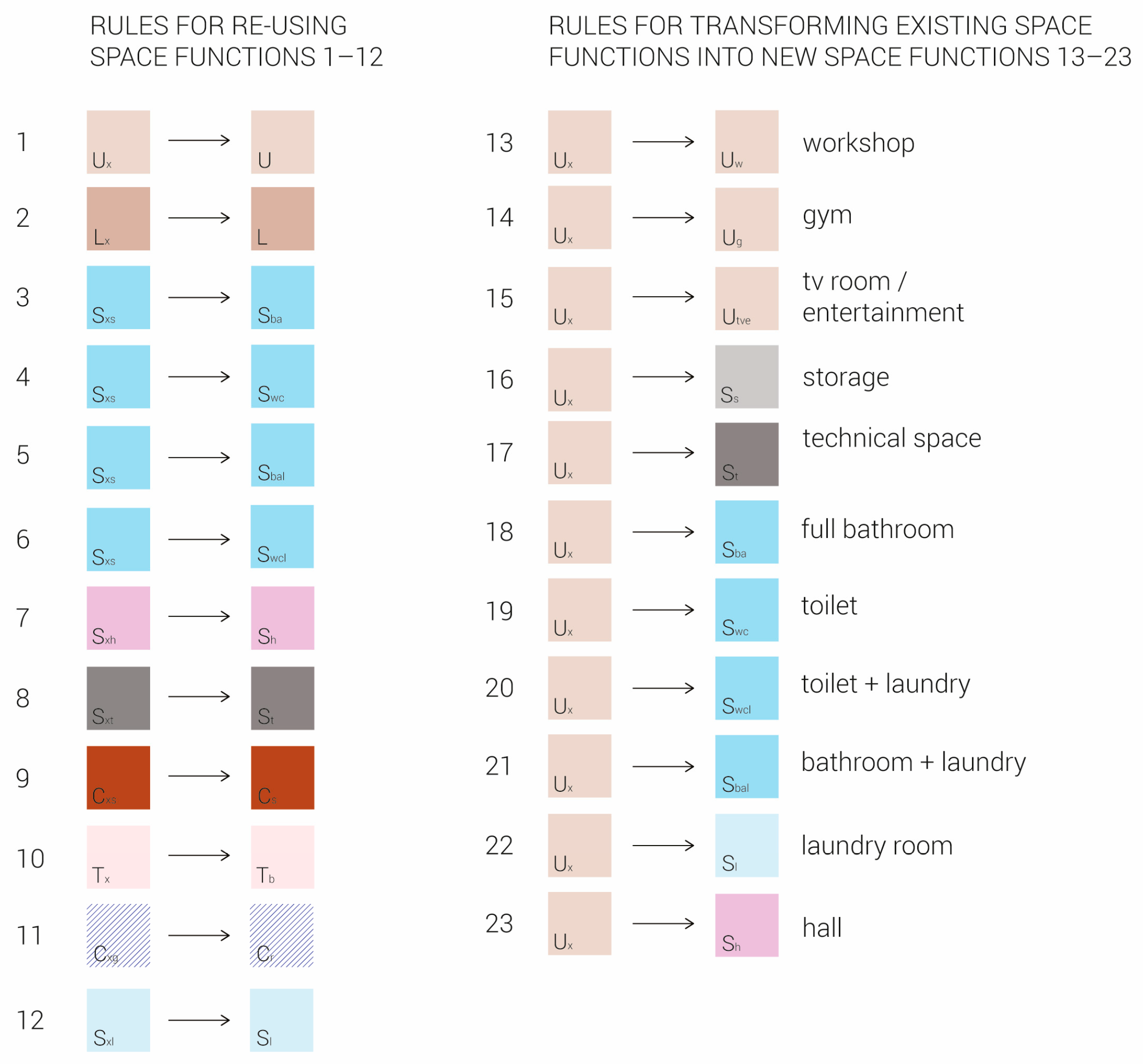
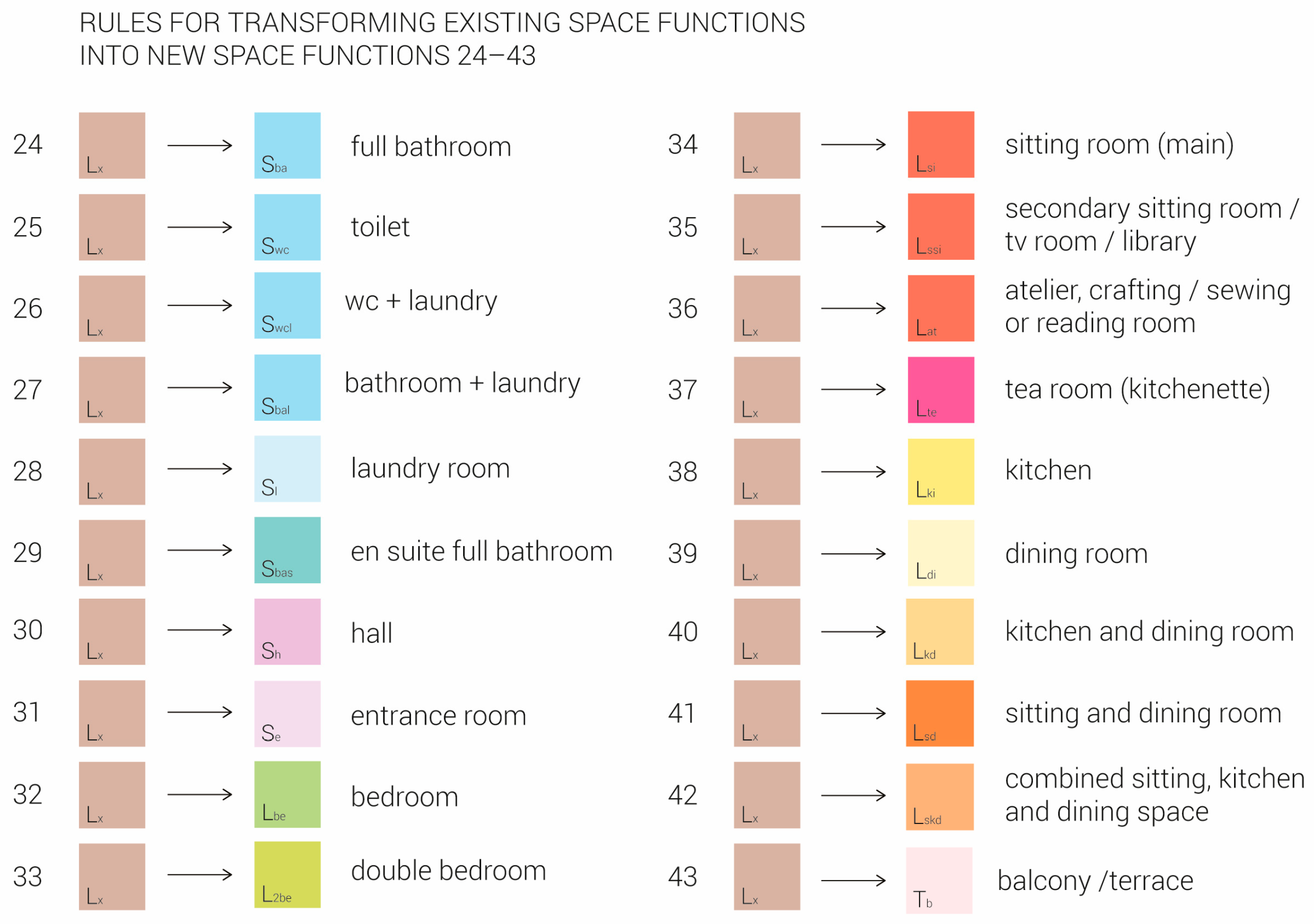
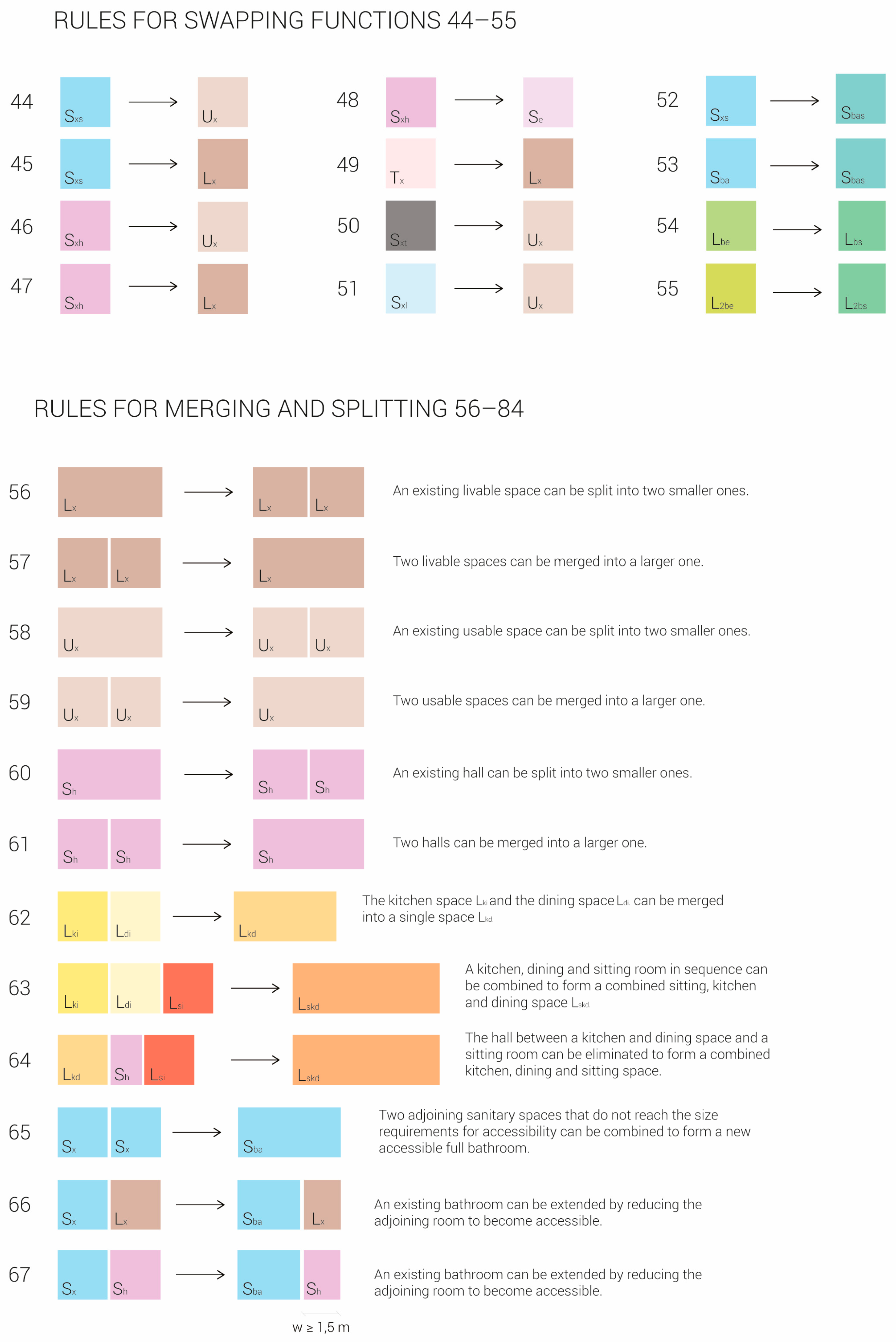

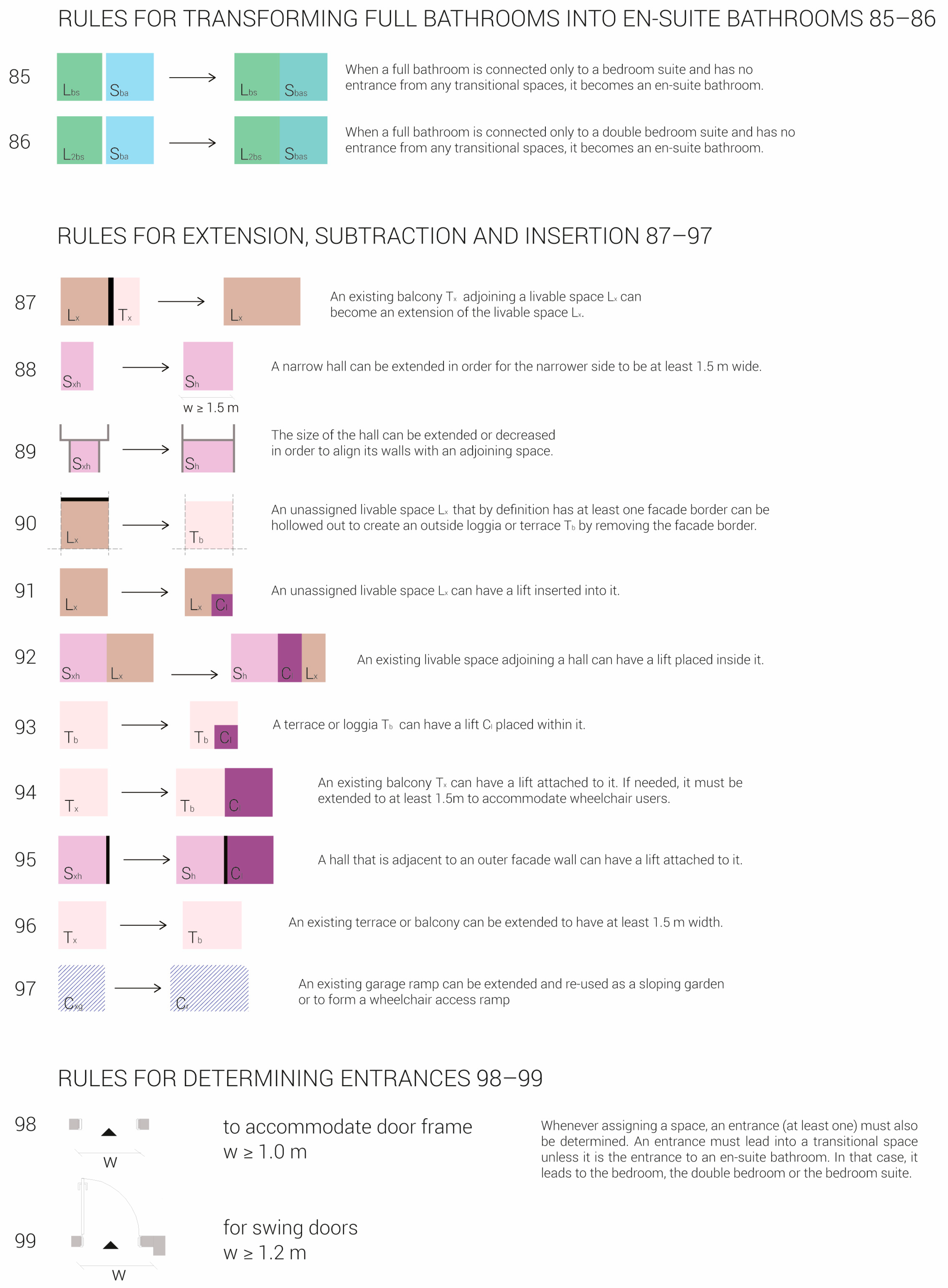
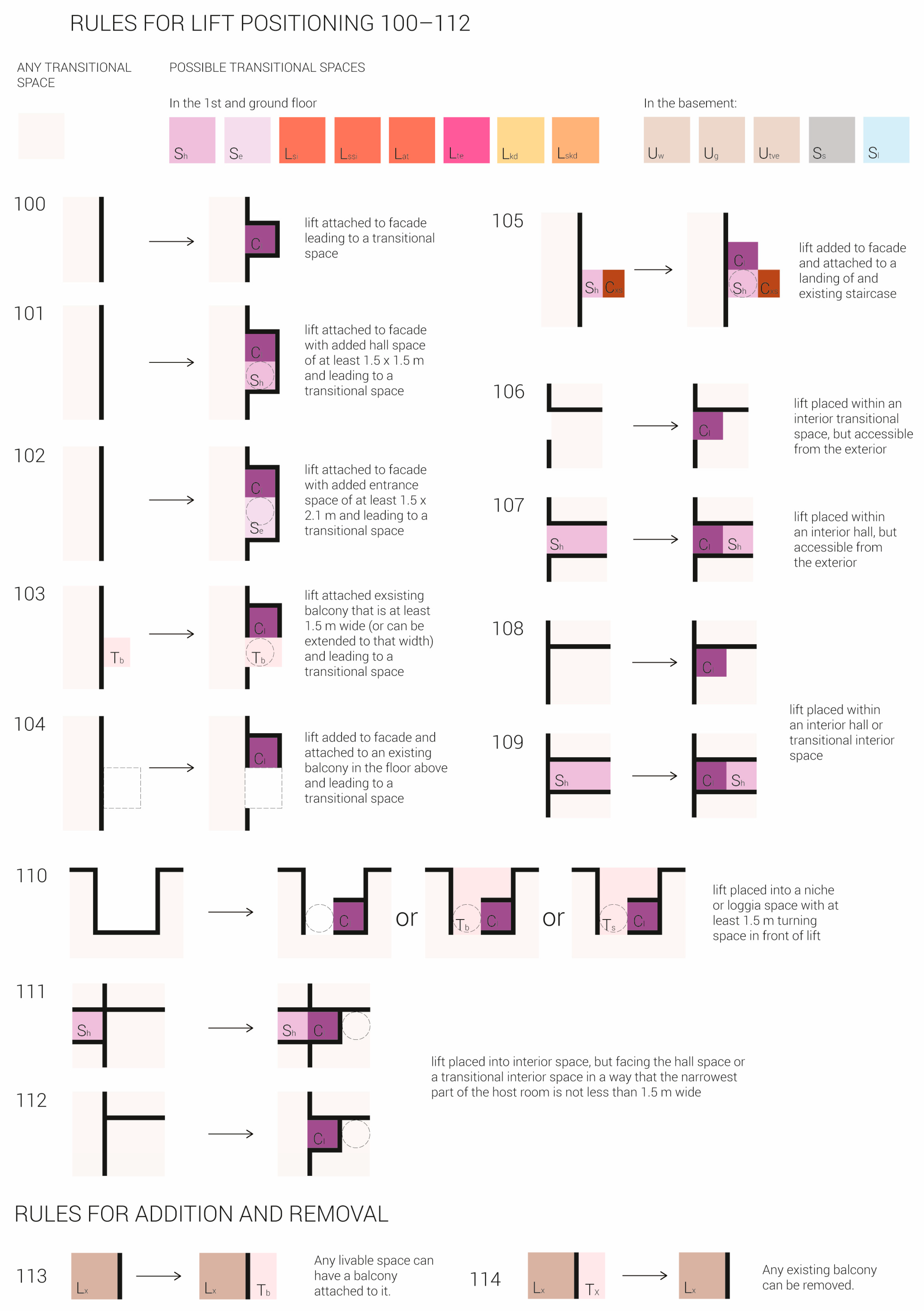
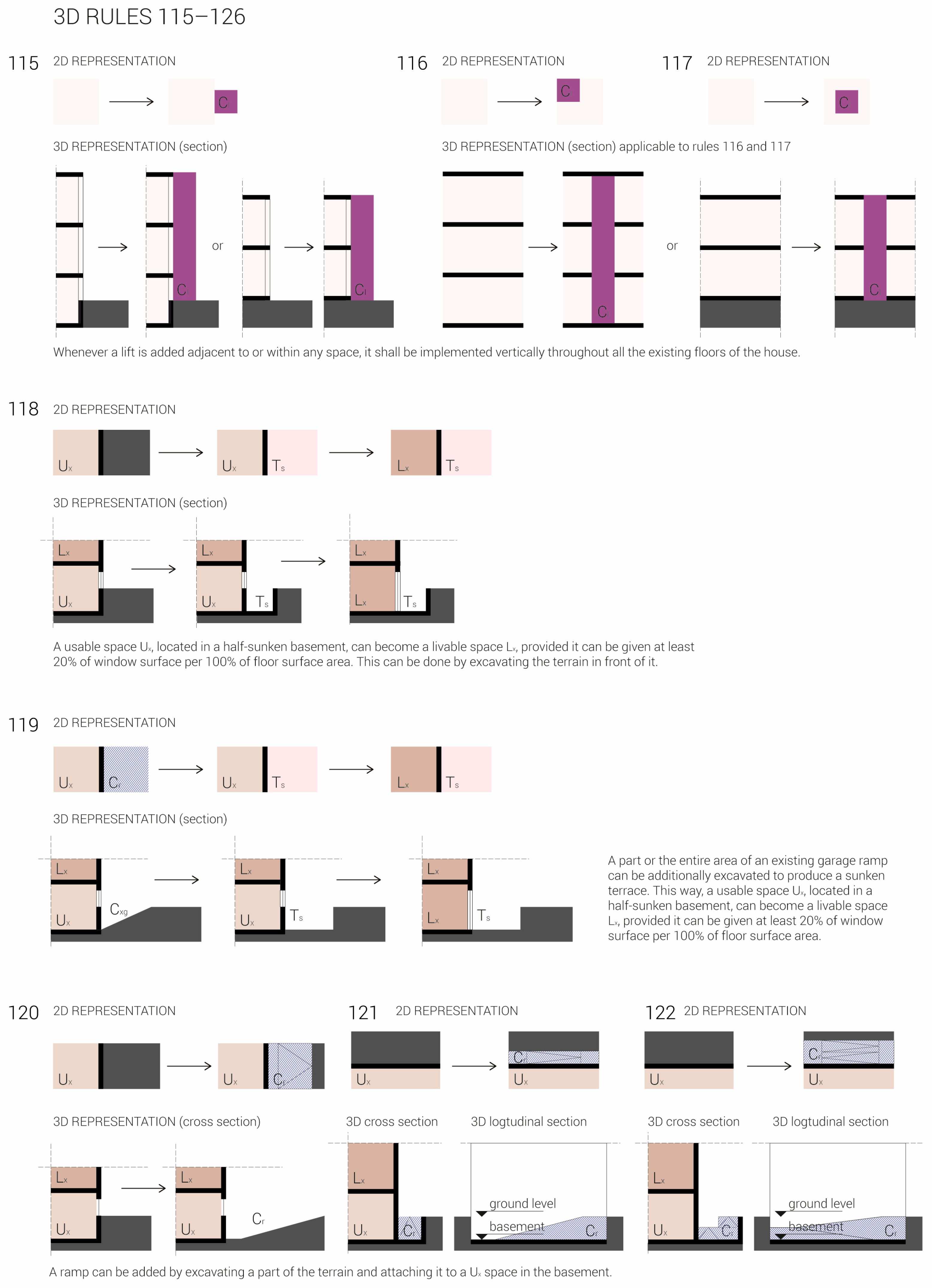
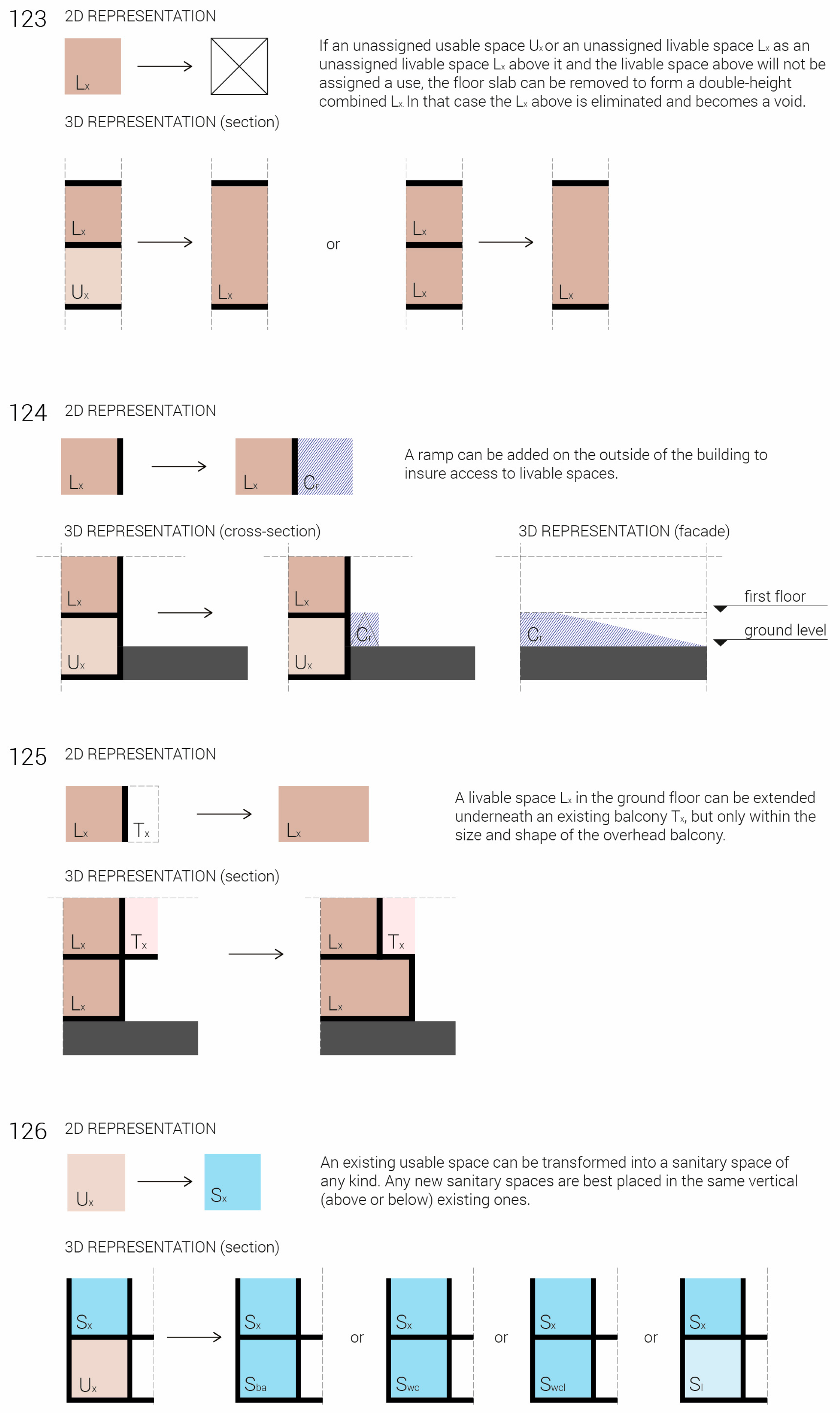
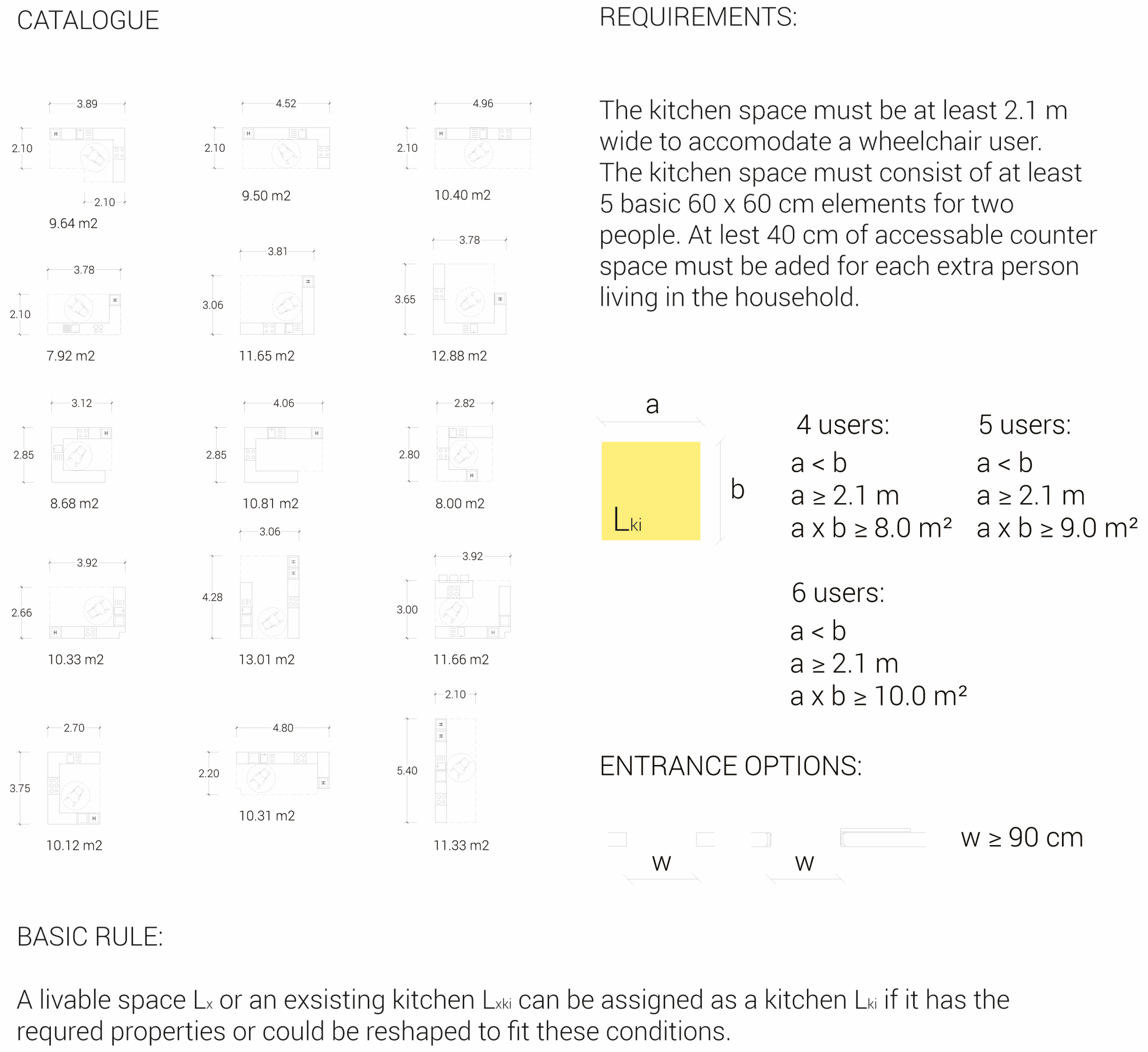
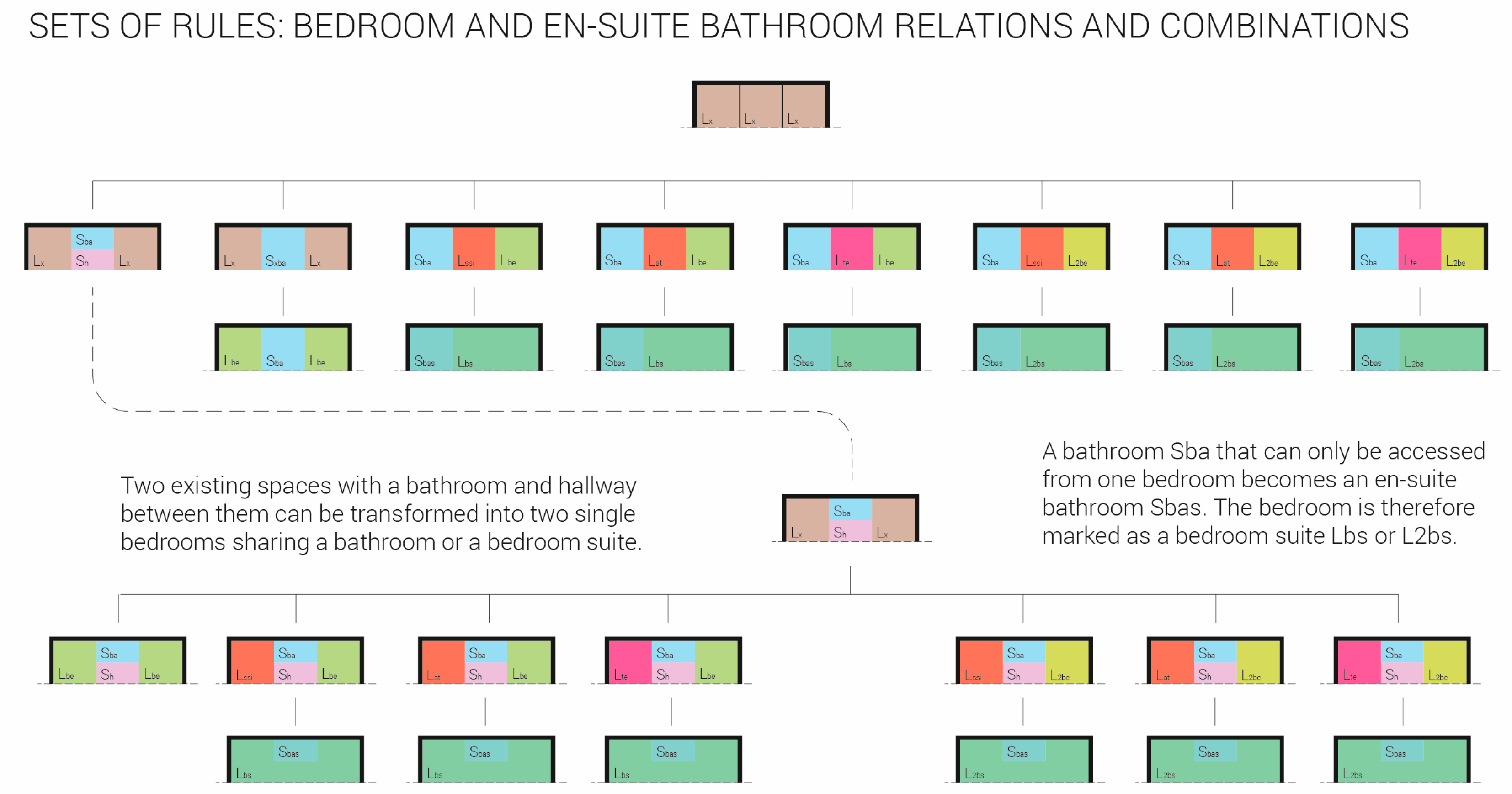
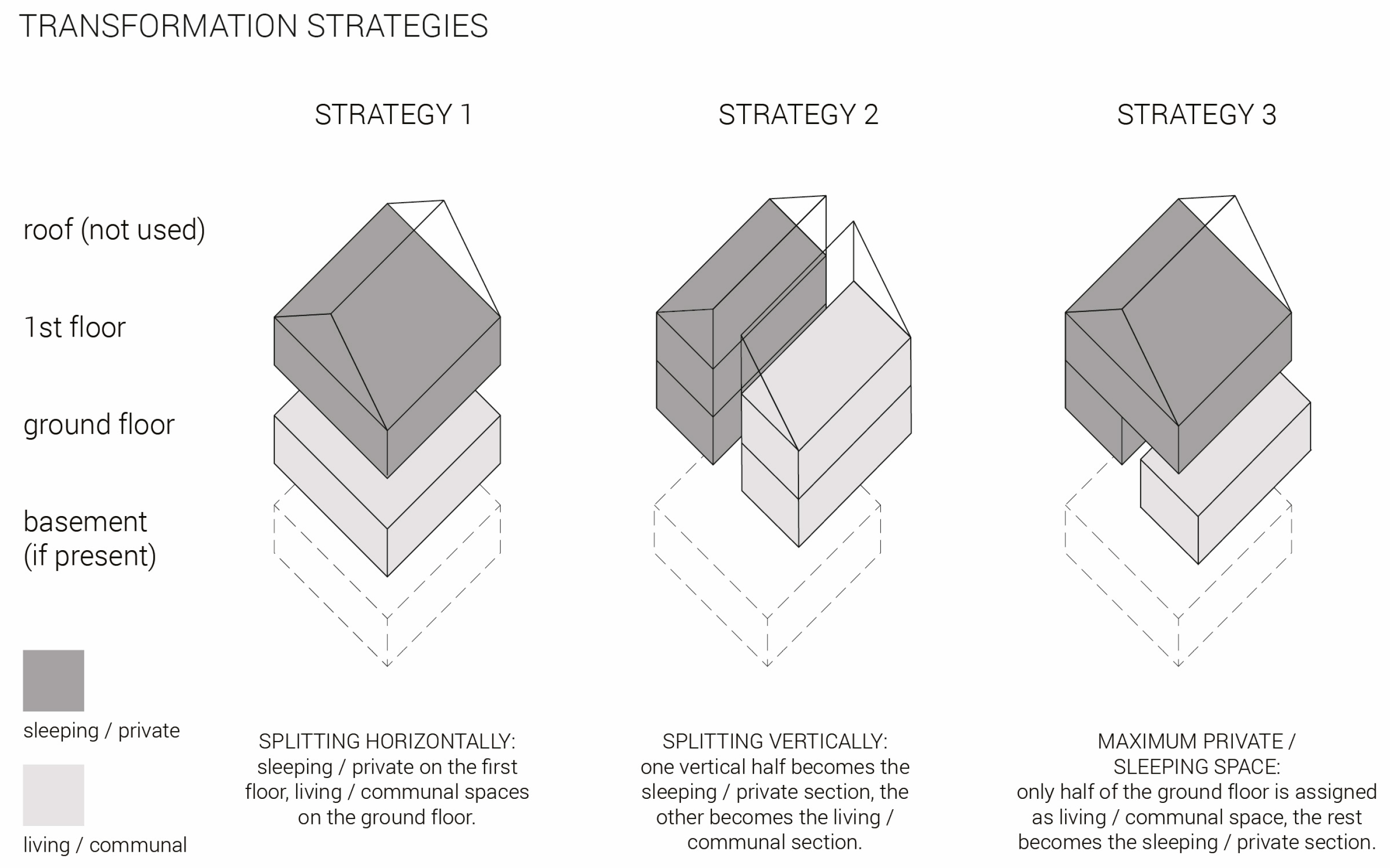
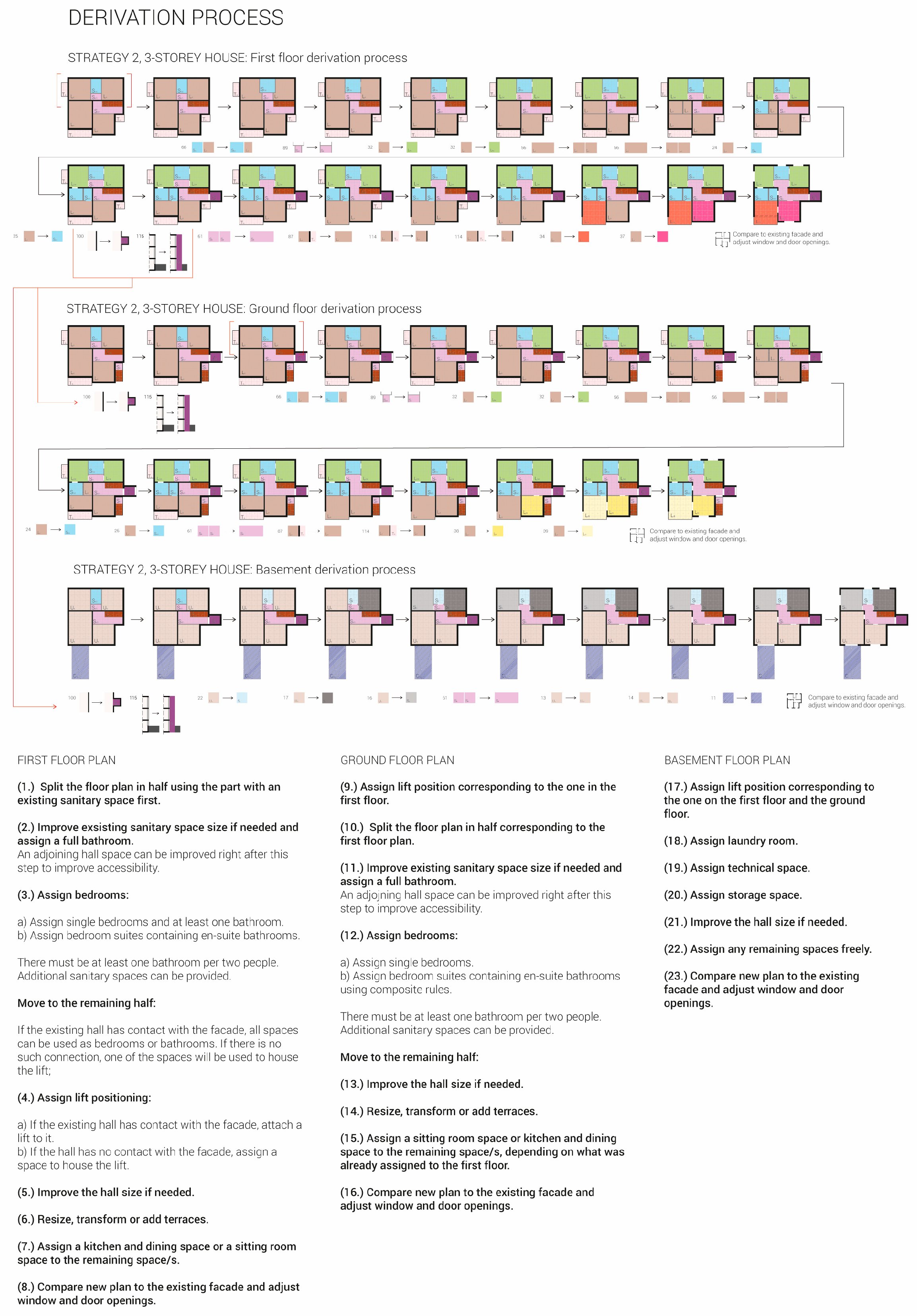
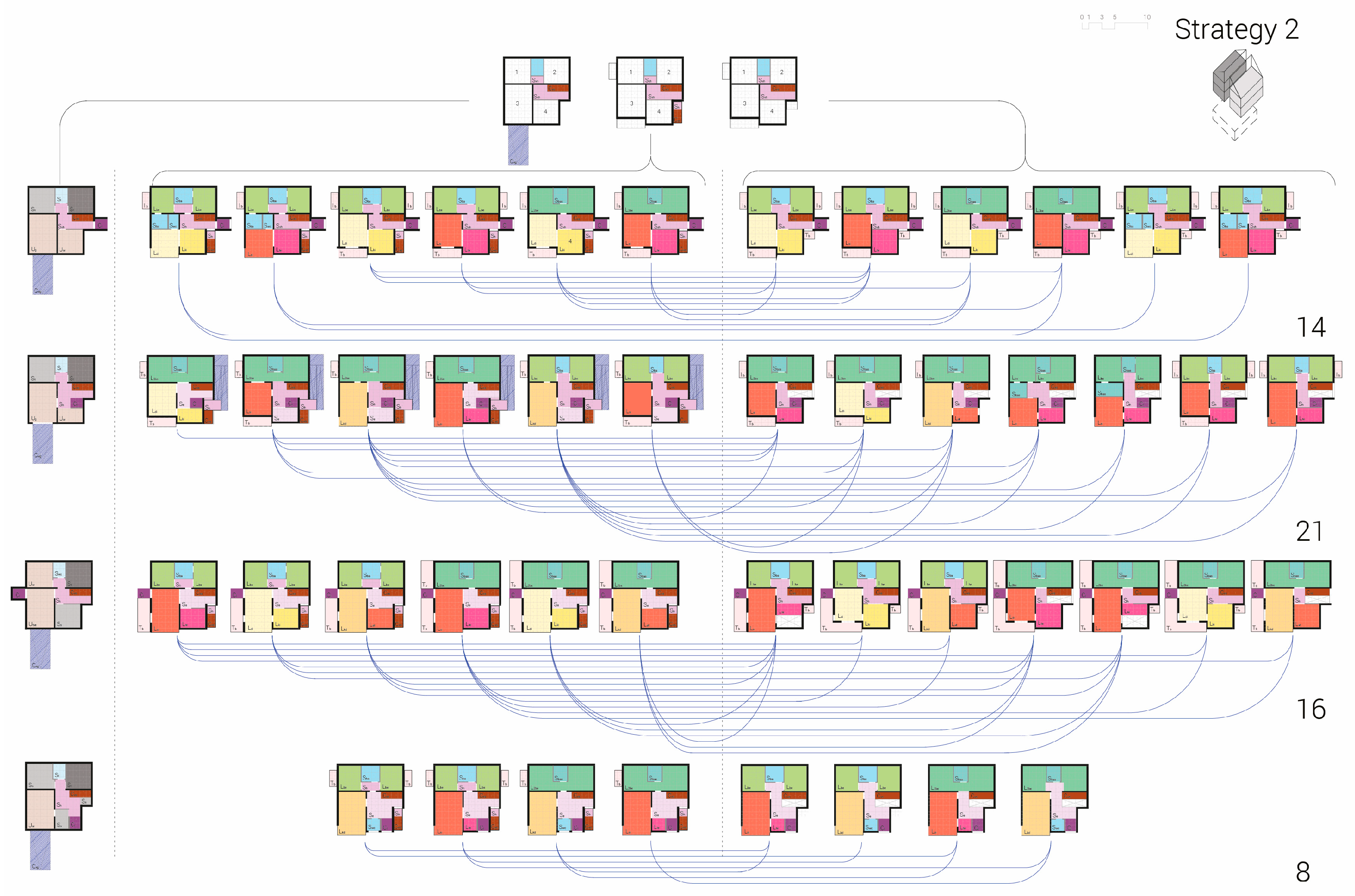
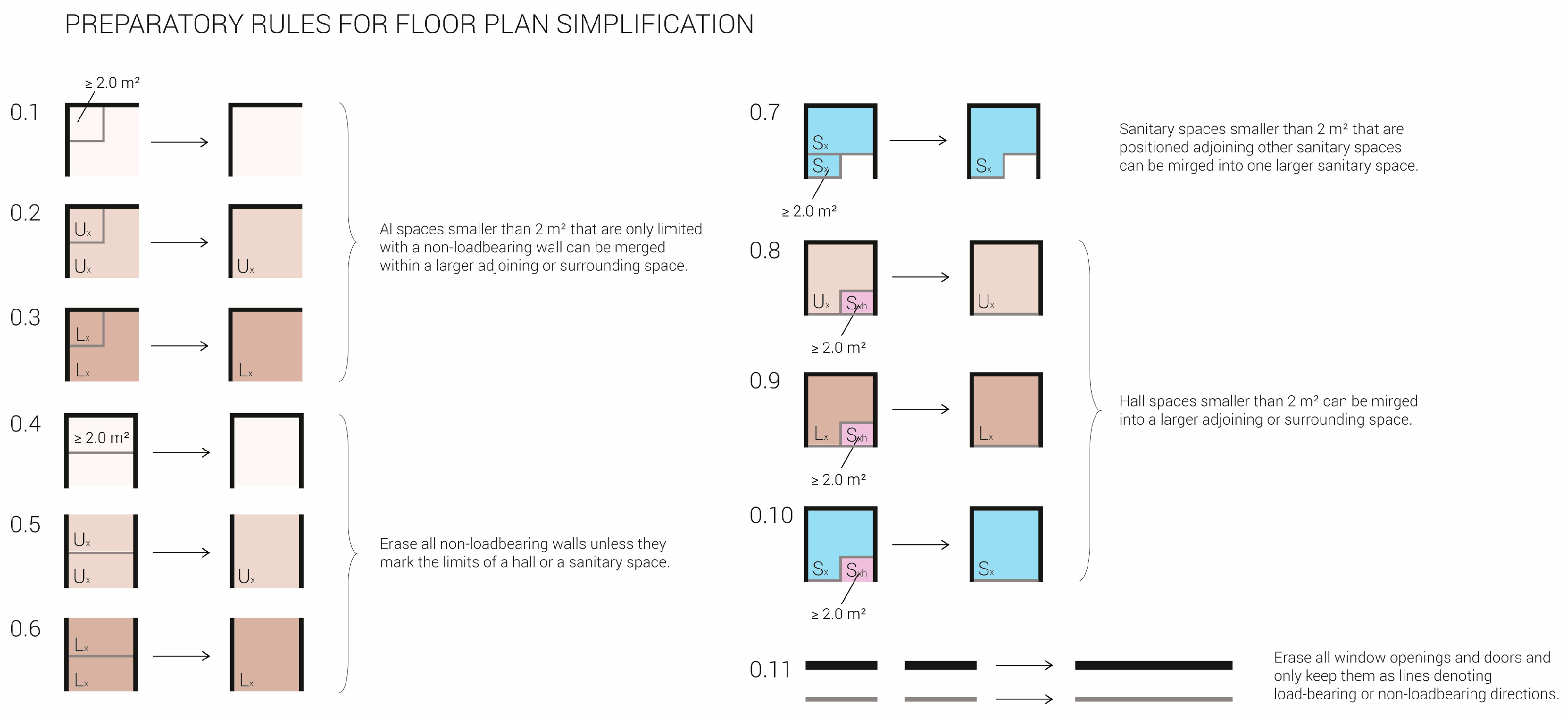
Disclaimer/Publisher’s Note: The statements, opinions and data contained in all publications are solely those of the individual author(s) and contributor(s) and not of MDPI and/or the editor(s). MDPI and/or the editor(s) disclaim responsibility for any injury to people or property resulting from any ideas, methods, instructions or products referred to in the content. |
© 2023 by the authors. Licensee MDPI, Basel, Switzerland. This article is an open access article distributed under the terms and conditions of the Creative Commons Attribution (CC BY) license (https://creativecommons.org/licenses/by/4.0/).
Share and Cite
Belčič, A.; Eloy, S. Architecture for Community-Based Ageing—A Shape Grammar for Transforming Typical Single-Family Houses into Older People’s Cohousing in Slovenia. Buildings 2023, 13, 453. https://doi.org/10.3390/buildings13020453
Belčič A, Eloy S. Architecture for Community-Based Ageing—A Shape Grammar for Transforming Typical Single-Family Houses into Older People’s Cohousing in Slovenia. Buildings. 2023; 13(2):453. https://doi.org/10.3390/buildings13020453
Chicago/Turabian StyleBelčič, Ana, and Sara Eloy. 2023. "Architecture for Community-Based Ageing—A Shape Grammar for Transforming Typical Single-Family Houses into Older People’s Cohousing in Slovenia" Buildings 13, no. 2: 453. https://doi.org/10.3390/buildings13020453





